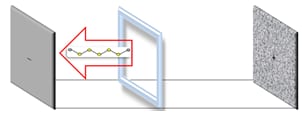Researchers based at Cornell University, Ithaca, NY, USA, report model membrane-free Li–S batteries for enhanced performance and cycle life in a Communication in issue 5/2015 of Advanced Science.
Batteries are usually composed of electrodes, an electrolyte and a separator. The role of the separator is to serve as an insulator and prevent short circuits. Lithium–sulfur batteries are becoming one of the most studied battery configurations for high-energy cells due to concerns that lithium-ion batteries will not meet demands for energy storage in transportation applications. In this work by Lynden Archer and co-workers, a Li–S cell model is reported that allows the role of the separator in the cycling behavior of the battery to be isolated and studied.
In Li–S cells, when the cells were operated in a membrane-less mode using an O-ring syle PTFE separator, an improvement in discharge capacity of as much as 40% was observed over cells utilizing as standard polypropylene membrane separator. Cells were studied in these two configurations in this work. The image shows schematics of the two cells, where the schematic on the left shows the system with the active material placed on top of the membrane on the cathode side, and the right-hand schematic shows the catholyte system without the membrane and with the active material placed inside the anode-PTFE pouch.
The membrane-free Li–S cells are shown to display better sulfur utilization and more-stable long-term cycling features and are thought to reduce diffusion barriers within the separator significantly, with an easy path for transport from the anode to the cathode. The design concept is extremely simple and it is thought that numerous studies will follow where similar synthesis approaches to those already employed will produce new separators that facilitate transport of lithium polysulfide, the active sulfur species, and optimize sulfur utilization in the cell.
Advanced Science is a new journal from the team behind Advanced Materials, Advanced Functional Materials, and Small. The journal is fully Open Access and is free to read now at www.advancedscience.com.


















